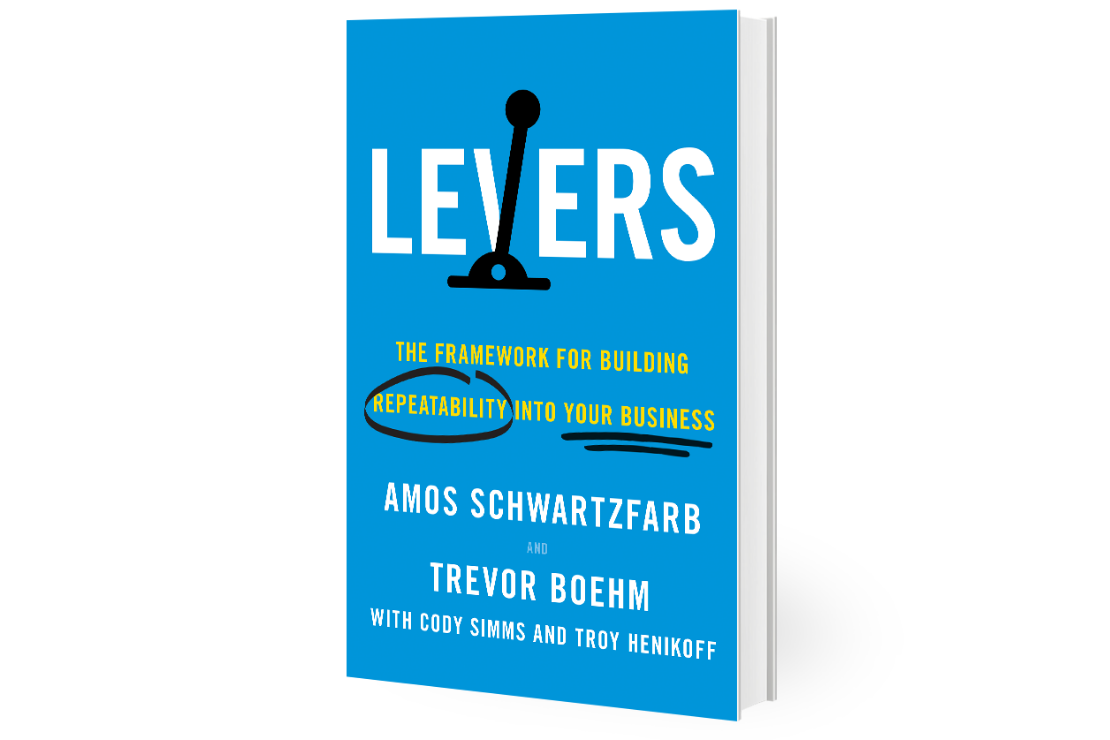If You Want Your Business To Reach It's Full Potential, You Need To Define Your WHO
Aug 02, 2021

By Amos Schwartzfarb, Managing Director of Techstars Austin, co-author of Levers: The Framework for Building Repeatability Into Your Business, author of Sell More Faster: The Ultimate Sales Playbook for Startups.
The following is adapted from Levers.
As an entrepreneur, your company’s success depends on your ability to answer some key questions. One of the most important of these questions—if not the most important—is who your customer base is.
Before you can grow your business, you have to know exactly who you’re trying to reach. Everything, from your marketing campaigns to how you design your products, flows from that. But defining your who isn’t always easy.
If you do it right, defining your who means developing the narrowest and most specific definition of whom you believe your customers are (or could be)—both today and in the near future. To start, you want your definition of who to be so narrow and specific that even you think your business will be small if those are your only customers.
This may seem counterintuitive. You might worry that if your definition is this narrow, investors won’t see the full potential. You may even wonder if it’s worth building the business if your customer base is so specific. But after being involved with dozens of successful start-ups, we’ve learned that defining your who in this way is vital. Let’s look at why that is first, and then, once you know why it’s so important, we’ll share our process for how to define your who with you.
Your Who Must be Specific
Your who is the reason you exist. Your who defines the entire potential for your business. At full scale, your who defines your total addressable market. It tells you which direction to go in to one day reach your full potential. This is quite broad, though; to be useful, your who must be specific.
Defining your who should start to get uncomfortable for you. If you’re doing it right, you will probably feel like you are greatly limiting your ability to grow or even reach your entire addressable market because you’ve made your who too narrow.
As you work through the process to define your who, keep in mind that this very narrow definition is not where you are ending. This is simply where you are starting so you can begin to get a very deep understanding of all the attributes of your ideal customer’s profile.
Why is it important to start with a narrow definition? There are actually a few reasons. First, when your who is as narrow and specific as possible, you will know, with 100 percent confidence, that every single time you have a conversation, it will result in a sale (within an appropriate time frame for your business).
Yes, you read that correctly. In your first iteration of your who, your goal is to define your customer group so tightly that 100 percent of your conversations result in early sales. Even if your entire target list is 0.0001 percent of the entire market, you’ll have absolute confidence that you will make a sale with every conversation.
Once you know your who that perfectly and that intimately, you will be able to identify and define every single attribute of why that who makes a perfect customer. When you have that long list of attributes, it becomes exponentially easier to grow and expand your who by testing each attribute—adding, changing, and eliminating attributes along the way to all the peripheral who groups until you have ultimately expanded to the entire potential universe of whos.
How to Define Your Who
To get started, write down all the known attributes you believe are in your who and go test them to see where you are right and wrong. Remember, you’re looking to get a sale 100 percent of the time. If you don’t hit that benchmark, keep working on your definition until you do. When you believe you can achieve a 100 percent close rate with your known who, start to experiment with those attributes to broaden your potential customer set using the same methodology.
That’s exactly what I did at Business.com, which I scaled to nearly $80 million in revenue. Business.com was a search engine and directory for businesses. Small and medium businesses would go to Business.com to search for products and services they were looking for. We made money through the businesses that advertised on the site.
In theory, any business could advertise on Business.com, and likewise, any business could purchase the products and services that were being advertised. Based on that description, who is my who? Conventional wisdom would suggest that it was any business. But where would we start with something like that? How would we know when we had the right buyers and sellers? How would we know if we didn’t have the right matches?
After countless tests, this is where we eventually settled for Business.com’s who, the businesses that purchased ads on our site: Small and medium-sized businesses (SMBs) that had “shorter sale cycle” products and services, things that typically didn’t need much research before someone made a purchase.
From there, we narrowed down further. Those SMBs were also:
In a product or service category on Business.com where we had a high level of page traffic and a sufficient number of existing sellers already on that page
Already buying advertising on Google
A top-ten advertiser on Google.
We didn’t stop there. We narrowed it down even further. Those SMBs also needed to:
Have someone whose core responsibility was digital acquisition
Measure results from their advertising campaigns on a regular basis so that they could see their own return on investment (ROI) from advertising on Business.com
Incentivize the individual in the company purchasing the ads so that they earned more money if they improved their key metrics.
That was our who. See how specific we got? It wasn’t easy, but when we zeroed in that closely on our who, not only did we close the sale 100 percent of the time, but also our churn rate was less than 1 percent. You need to do the same thing for your business.
Don’t Rush Through Defining Your Who
Defining your who isn’t something you can do quickly. You may come up with an initial definition relatively fast, but you need to test it and refine it.
It may seem daunting, but the benefits of doing this are enormous. Once you’ve defined your who, you’ll be able to close your sales and grow your business in a powerfully intentional way.
You’ll never wonder again who you’re selling to or how to reach them. If you follow this process, you’ll always know exactly who your ideal customers are, no matter what industry you’re in or what your business offers.
About the Author

Amos Schwartzfarb
Amos Schwartzfarb is Managing Director of the Techstars Austin Accelerator, and after over 70 seed stage investments, he has become one of the more active early stage investors in all of Texas. Amos is the is the co-author of Levers: The Framework for Building Repeatability Into Your Business, author of Sell More Faster: The Ultimate Sales Playbook for Startups.
